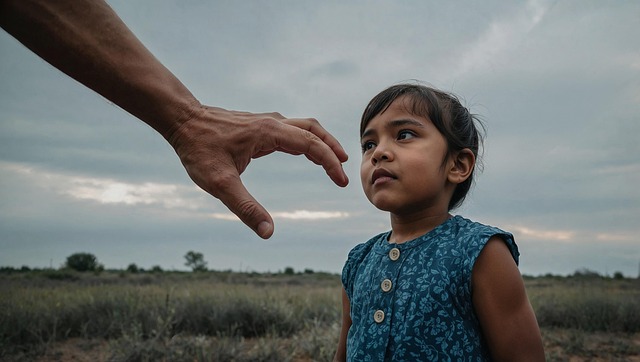Category: Shelterwood Academy Abuse Victims
Shelterwood Academy Abuse Victims: A Comprehensive Analysis
Introduction
In the realm of social welfare and education, the topic of sheltering and supporting victims of abuse is a critical aspect often centered around specialized institutions known as “shelterwood academies.” This article delves into the complex world of Shelterwood Academy Abuse Victims, exploring their definition, global impact, economic implications, technological influences, policy frameworks, challenges, and promising future prospects. By examining these various facets, we aim to provide an insightful understanding of this vital area of work and its potential for positive change.
Understanding Shelterwood Academy Abuse Victims
Definition
Shelterwood Academy Abuse Victims refer to individuals, primarily children and adolescents, who have experienced trauma or abuse within institutional settings, particularly specialized educational academies designed to offer shelter, rehabilitation, and therapeutic support. These academies are meant to provide a safe haven for victims, offering comprehensive care, education, and skills training to aid in their recovery and reintegration into society.
Core Components
The core components of Shelterwood Academy Abuse Victims encompass:
- Safe Shelter: Ensuring a secure and supportive environment free from potential harm or further abuse.
- Therapeutic Support: Providing individual and group therapy sessions to address trauma, emotional, and psychological needs.
- Education and Skills Training: Offering academic education tailored to each student’s needs, along with vocational training to enhance their future prospects.
- Community Engagement: Facilitating interactions with supportive community members and organizations for social reintegration.
- Legal and Advocacy Services: Assisting victims in navigating legal systems and advocating for their rights.
Historical Context
The concept of shelterwood academies has evolved over time, influenced by societal shifts in understanding child abuse, trauma, and the importance of specialized care. Historically, such institutions were often established as charitable endeavors by concerned individuals or organizations to address the growing concern over abused and neglected children. Over the years, they have adapted to incorporate modern therapeutic practices, educational methodologies, and technological advancements.
Global Impact and Trends
International Influence
The issue of Shelterwood Academy Abuse Victims is a global concern, with every country facing unique challenges in addressing child abuse and providing adequate support systems. The international community has recognized the need for specialized care, leading to the establishment of various organizations and networks dedicated to sharing best practices and resources.
Regional Variations:
- North America: Known for its robust social welfare systems, North American countries have a strong focus on protective services and therapy-focused approaches.
- Europe: European nations prioritize comprehensive support networks, including family-based interventions and community reintegration programs.
- Asia: Some Asian countries are witnessing increased awareness and investments in specialized care, while others struggle with cultural barriers to reporting and addressing abuse.
- Africa and Middle East: These regions often face resource constraints but are making strides through community-based initiatives and partnerships with international organizations.
Key Trends Shaping the Trajectory
- Increasing Awareness: Global campaigns and initiatives have raised awareness about child abuse, leading to greater reporting and demand for specialized services.
- Technology Integration: The adoption of technology in therapy, education, and communication has enhanced service delivery and accessibility.
- Community-Based Approaches: There is a growing emphasis on involving families, communities, and local organizations in support systems to foster better reintegration.
- International Collaboration: Cross-border partnerships and knowledge sharing are becoming more common, leading to improved standards of care.
Economic Considerations
Market Dynamics
The market for Shelterwood Academy services is influenced by several factors:
| Factor | Impact |
|---|---|
| Demand: Driven by reported cases of child abuse and neglect, as well as referrals from social welfare agencies. | High demand indicates the need for more specialized academies. |
| Competition: The presence of both public and private shelterwood academies creates a competitive landscape. | Competition can drive innovation and improve service quality. |
| Funding Sources: Government grants, donations, and partnerships play a crucial role in financing these institutions. | Diverse funding ensures sustainability and allows for expansion. |
Investment Patterns
Investing in Shelterwood Academies offers both financial and social returns:
- Financial Benefits: Long-term cost savings through reduced reliance on emergency services, improved employment rates, and decreased recidivism.
- Social Impact: Positive outcomes for victims, including better mental health, increased educational attainment, and enhanced community reintegration.
Economic System Integration
These academies are integral to economic systems by:
- Skill Development: Equipping young people with marketable skills contributes to the workforce and reduces long-term social costs.
- Tax Revenue: Employed graduates contribute to tax revenues, fostering economic growth.
- Community Empowerment: Strong communities lead to more stable and prosperous societies.
Technological Advancements
Impact on Shelterwood Academy Abuse Victims
Technology has revolutionized Shelterwood Academy practices in several ways:
- Online Therapy Platforms: Telehealth services enable access to therapy for remote students, improving continuity of care.
- Digital Education Tools: Online learning platforms and interactive software enhance engagement and cater to diverse learning needs.
- Communication Apps: Secure messaging apps facilitate communication between students, therapists, and support staff, fostering a sense of community.
- Data Management Systems: Digital record-keeping improves efficiency, data analysis, and service planning.
Future Prospects
The future holds immense potential for technology to:
- Personalized Learning: Artificial intelligence can tailor educational content and therapy sessions to individual needs.
- Virtual Reality (VR) Therapy: VR offers immersive experiences for exposure therapy and sensory integration.
- Social Media Engagement: Strategic use of social media can promote awareness, recruit volunteers, and connect students with peer support networks.
Policy Frameworks and Regulations
Legal Considerations
Shelters and academies operating in various jurisdictions are subject to different legal frameworks:
- Licensing and Registration: Most countries require registration and adherence to specific standards for operation.
- Data Privacy Laws: Protecting student records and ensuring data security is essential.
- Child Protection Acts: These laws govern the care, custody, and protection of children in institutional settings.
Advocacy and Support
Policy advocates push for:
- Increased Funding: To ensure adequate resources for specialized services.
- Comprehensive Legislation: Addressing all aspects of child abuse prevention, intervention, and support.
- International Collaboration: Standardizing best practices and sharing resources globally.
Challenges and Barriers
Common Obstacles
- Funding Shortages: Insufficient funding hinders the expansion and improvement of shelterwood academies.
- Staffing Issues: Recruiting and retaining qualified professionals, especially in remote areas, is challenging.
- Stigma and Underreporting: Cultural taboos and fear of repercussions often lead to underreported cases of abuse.
- Transitional Challenges: Reintegrating graduates into society and supporting them through the challenges of adult life.
- Technological Divide: Ensuring equal access to technology for all students, addressing digital literacy gaps.
Future Strategies and Promises
Innovative Approaches
- Community-Based Interventions: Collaborating with local communities to create supportive environments and reduce stigma.
- Early Intervention Programs: Identifying and supporting at-risk children before they reach crisis points.
- Peer Support Networks: Encouraging peer support among graduates to foster a sense of community and reduce feelings of isolation.
- Digital Inclusion: Ensuring all students have access to technology and digital literacy skills.
Global Collaboration
The future of Shelterwood Academy Abuse Victims lies in:
- Cross-Border Learning: Sharing best practices, research, and resources across borders.
- International Partnerships: Collaborating with organizations like UNICEF, WHO, and local NGOs to advocate for policy changes and resource allocation.
- Digital Global Communities: Establishing online platforms for global communication, knowledge sharing, and support networking.
Conclusion
Shelterwood Academy Abuse Victims represents a critical segment of the global effort to protect and rehabilitate vulnerable children and young people. By understanding its various facets, from historical context to technological advancements, we can navigate challenges and forge a path toward more effective and accessible support systems. The future holds immense promise for innovation, collaboration, and positive impact, ensuring that no child is left without hope and healing in the face of abuse and trauma.
Healing, Identity, Resilience: Shelterwood Academy Survivors’ Stories

Shelterwood Academy abuse victims find solace in shared trauma stories, fostering resilience and sup…….
Advocating for Justice: Supporting Shelterwood Academy Abuse Survivors

The impact of abuse on Shelterwood Academy victims is profound, causing trauma, anxiety, and low sel…….
Supporting Shelterwood Academy Victims’ Families for Healing

Shelterwood Academy abuse victims face complex needs, including trauma healing, relationship buildin…….
Supporting Shelterwood Academy Abuse Victims’ Families

The effects of abuse at Shelterwood Academy impact not only victims but also their families, leaving…….
Seeking Justice: Healing from Shelterwood Academy Abuse
Resources and Support for Shelterwood Academy Abuse Victims’ Healing

Founded in the 19th century, Shelterwood Academy suffered a dark history of systemic abuse against g…….
Advocating for Justice: Supporting Shelterwood Academy Abuse Victims

Advocates and support networks are essential for Shelterwood Academy abuse victims, providing guidan…….
Justice for Shelterwood Academy Abuse Victims’ Rights

Shelterwood Academy abuse victims have specific legal rights and access to support services includin…….
Supporting Shelterwood Academy Abuse Victims: A Collective Call to Action

Tailored interventions, safe spaces, and education empower Shelterwood Academy abuse survivors. Syst…….

